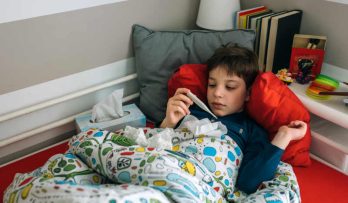It’s more important than ever for parents to comprehend the dangers of the measles virus and the potential consequences of not getting vaccinated against it in light of the recent outbreak of measles in the Pacific Northwest of the United States. Measles is a highly contagious illness that can be transferred by direct contact or by air.
When a sick person coughs, sneezes, or is simply nearby you or your child, air droplets carrying the measles virus can readily spread to you or your child. Measles is an extremely contagious virus that infected hundreds of thousands of Americans every year. The incidence of new cases of measles has considerably decreased since the introduction of the measles vaccine and the combined vaccine for measles, mumps, and rubella (MMR). However, the outbreak in Oregon and Washington serves as a reminder of what might happen if kids are not vaccinated against measles.
Who Is Most Prone to Measles Infection?
Measles can affect anyone, regardless of age or condition. But individuals who are older than 30, pregnant, or have immunological disorders are more vulnerable to the measles than children under the age of five. However, young children aren’t merely more likely to get the measles. They have a higher risk of developing a serious illness from the virus.
What Are Measles’ Symptoms?
Fever, cough, congestion, and conjunctivitis are the typical symptoms of measles, which is subsequently followed by a widespread rash that begins on the face and spreads to the rest of the body. After infection, symptoms may begin to appear seven to ten days later. The measles rash that affects your child’s skin might take 7 to 21 days to appear.
Can This Virus Kill You?
There is no doubt that measles has the potential to be fatal. Simple side effects like an ear infection are the unfortunate best case possible repercussions of this illness. More dangerously , it can also result in fevers, acute pneumonia, and brain enlargement, all of which increase the risk of blindness and demise. Again, kids under five are most likely to pass away from these grave issues.
Can Children Who Have the Measles Recover?
There is no specific treatment for measles, though children can recover from it. Medical professionals can only assist and treat patients’ symptoms, such as dehydration brought on by fever, as it is a virus that must naturally run its course. Due to the high contagiousness of the virus, your kid will be isolated in a specific hospital room if they are identified as having the measles. Additionally, a rare type of progressive degenerative encephalitis can manifest years after measles exposure. The ideal situation? Vaccinate your child to avoid them ever getting measles in the first place.
Has the Number of Measles Cases Increased?
A now-debunked study that claimed vaccines cause autism sparked a “anti-vax” campaign in some U.S. states and other nations. Measles could return and spread in areas where parents are declining to vaccinate their children more and more. New York, Washington, and Texas all experienced notable outbreaks in 2019. The epidemic in Washington resulted in the declaration of a public health emergency and involved 54 verified cases. Ensure your child has had their most recent dose of measles immunization is the best preventive action you can take as a parent.
How Can Measles be Avoided?
First and foremost, it’s crucial to stress the safety of the MMR and measles immunizations. In fact , we’ve been administering the same measles vaccine since 1968. Most likely, you and even your parents received this vaccination when they were young. Therefore, the best preventive action you can take as a parent is to make sure your child has received the most recent dose of the measles vaccine. Bring your child back for their second scheduled dose because not all patients respond to a single shot. It is also the responsibility of parents of healthy children to safeguard vulnerable youngsters who cannot receive the immunizations due to weakened immune systems.
The best option for ensuring the safety and health of your child and your community is to vaccinate them against diseases like measles. Always get in touch with your pediatrician and discuss any worries you may have about the measles, the MMR vaccine, or other vaccinations.




